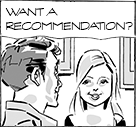Page 45 Review by Stephen
A magical wordless narrative in soft pencil lit with bursts of blue and yellow, this will draw parallels with Shaun Tan's THE ARRIVAL for its form, its style, its fantastical nature and its social metaphor.
Daishu Ma is a Chinese creator, and the smog-inducing industrialisation which China has undergone so swiftly over the last few decades informs everything here from the message itself to the depiction of workers boxed into endless rows of cubicles crammed with unknowable levers, lights, buttons and gauges, all dwarfed below giant power-grid screens. This is the futurism not of now but of the early-to-mid 20th Century - of Fritz Lang's Metropolis et al.
But it begins in the rolling countryside overlooking the city with the last leaves falling from the trees and a bird taking flight from its otherwise empty nest. Those out strolling brush through carpets of leaves as crisp and clean as if they had been freeze-dried then strewn by species into specific plots. A young man with a thick woollen scarf wrapped round his neck spies something glowing beneath the grey debris and pulls out a single perfect leaf glowing blue with bright white spots.
Slowly he walks back into town, its concrete suburb walls cluttered with steam pipes and valves and funnels and gauges and clocks. He passes through residential areas then those selling goods from small stalls or warming their hands over an open fire. But everything - even the fire - is tinged with the coldest of blues. Once home he opens the shutters to let in the light - the electric blue light of a bulb-lined leafless tree - then nods off beneath the window. Briefly, ever so briefly, he has a vision of the bulbs replaced by leaves back on the branches radiating a warm, golden glow.
This isn't as obvious or as black and white as I supposed on my first read through. Initially I thought those were the last leaves of winter - that the senescence was seasonal. I'm not so sure now. Also, that leaf isn't necessarily glowing blue. Colour here seems to denote temperature, yes, but also mood and - for want of a better word - health or lack thereof. Furthermore there is a glorious double-page spread of an enormous tree in the city's circular square, strewn with big, bright, domestic-sized bulbs which has the admirers gathered round it enraptured. There are many forms of beauty which we do delight in - even if there's a price to be paid.
That price is made abundantly clear a dozen or so pages on, after our young man has shown his new prized possession to an elderly man in glasses and been introduced to the first of the city's secrets which he will pursue later on. It's a full-page depiction of that same barren tree at the bottom, the circle of houses surrounding it reflected towards the top in a stark silhouette of the vast factory complex sitting on the skyline, its chimneys belching smoke like a volcano fed from below... or like a similarly circular verruca whose roots suck the life out whatever its grown on.
Context - and a decidedly thrilling contrast - to all this is provided when our protagonist stumbles upon his first waking glimpse of a golden glow, emanating from a house above whose door hangs a leaf in semi-relief, carved into wood. The context comes in the form of multi-year memory of the home's occupant, of her father first building a simple wooded shack from which he used to sell fertile potted plants, then its gradual evolution, Will Eisner-style, into its modern bricks-and-mortar incarnation. The final panels' flurry of falling leaves come as little surprise, but they aren't the first to go. Take a close look when browsing because what happens in panel six is very telling.
As to the contrast, it's the burst of organic warmth inside the home where a woman sits studiously at a candle-lit table surrounded by shelves thick, bound books and far more exotic leaves that we've encountered previously - and which presumably no longer grow - pressed onto paper or displayed in glass cases, bottles and jars. Suspended from the ceiling are even more elaborate specimens reduced to their skeletal, dried-out midribs and veins.
Where his curiosity will take the young man - and what will catalyse his final decision - I'll leave you to learn. Unlike THE ARRIVAL the reason this is wordless has nothing to do with any language barrier. It's more about encouraging readers' interpretation and a shared journey in uncovering the graphic novel's mysteries.
There are several stand-out sequences for me like the nine-panel grid of ever-ascending steps and ladders in a monumental factory, arranged so that the stairs match up from left to right, drawing your eye diagonally upwards and emphasising the illusion of climbing even though the topmost ledge is at the bottommost panel! That's clever enough, but the composite effect is that the walls look like a circuit board.
The storytelling is as gently paced as any perambulation, which is what this essentially is. In fact it's only when the chap speeds up that he runs into trouble.
I think you'll love lingering anyway because, oh, the colours!

